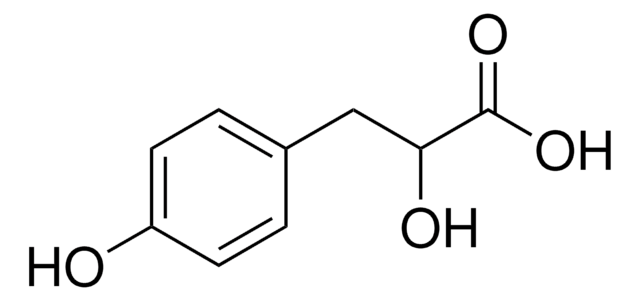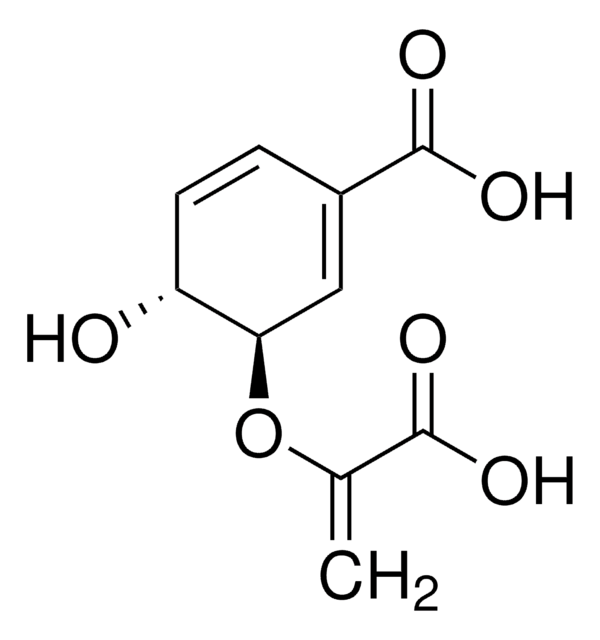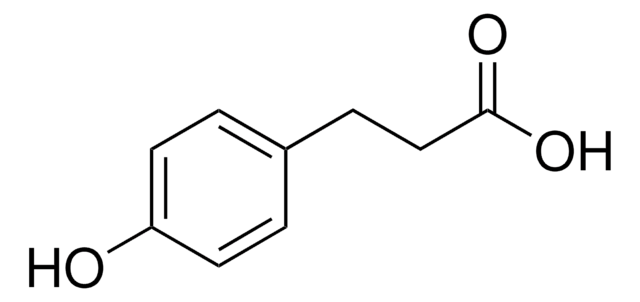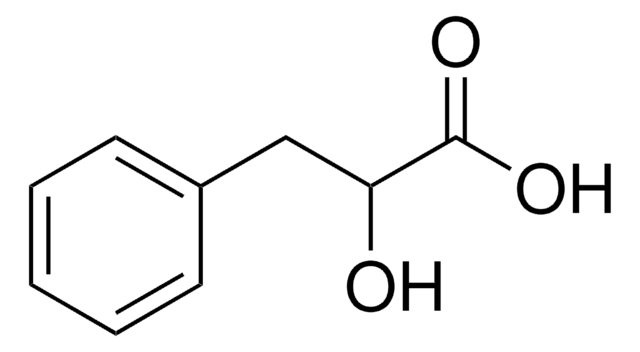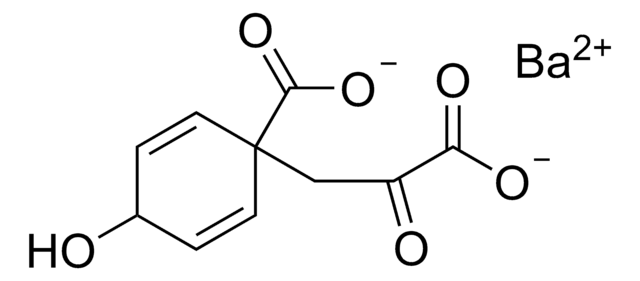114286
4-Hydroxyphenylpyruvic acid
98%
Synonyme(s) :
3-(4-Hydroxyphenyl)-2-oxopropanoic acid
About This Item
Produits recommandés
Niveau de qualité
Pureté
98%
Forme
solid
Pf
219-220 °C (dec.) (lit.)
Solubilité
ethanol: soluble 50 mg/mL
Groupe fonctionnel
carboxylic acid
ketone
Chaîne SMILES
OC(=O)C(=O)Cc1ccc(O)cc1
InChI
1S/C9H8O4/c10-7-3-1-6(2-4-7)5-8(11)9(12)13/h1-4,10H,5H2,(H,12,13)
Clé InChI
KKADPXVIOXHVKN-UHFFFAOYSA-N
Vous recherchez des produits similaires ? Visite Guide de comparaison des produits
Catégories apparentées
Description générale
Application
<li><strong>Identification of serum biomarkers of ischemic stroke:</strong>4-Hydroxyphenylpyruvic acid is used as a potential diagnostic biomarker in the study to distinguish hypertensive ischemic stroke (IS) patients from both healthy individuals and those with hypertension (Zhao et al., 2023).</li>
</ul>
Notes préparatoires
Mention d'avertissement
Warning
Mentions de danger
Conseils de prudence
Classification des risques
Eye Irrit. 2 - Skin Irrit. 2
Code de la classe de stockage
11 - Combustible Solids
Classe de danger pour l'eau (WGK)
WGK 3
Point d'éclair (°F)
Not applicable
Point d'éclair (°C)
Not applicable
Équipement de protection individuelle
dust mask type N95 (US), Eyeshields, Gloves
Faites votre choix parmi les versions les plus récentes :
Déjà en possession de ce produit ?
Retrouvez la documentation relative aux produits que vous avez récemment achetés dans la Bibliothèque de documents.
Les clients ont également consulté
Notre équipe de scientifiques dispose d'une expérience dans tous les secteurs de la recherche, notamment en sciences de la vie, science des matériaux, synthèse chimique, chromatographie, analyse et dans de nombreux autres domaines..
Contacter notre Service technique
